
10 Realistic Budgeting Tips to Take Control of Your Finances in 2025
Are you tired of feeling like your money slips through your fingers every month? You’re not alone—many people struggle to manage their finances, especially with rising costs and changing economic conditions. But here’s the good news: realistic budgeting tips can help you regain control and start making your money work for you. Whether you’re saving for a big purchase, trying to pay off debt, or simply looking to manage your monthly expenses, the strategies in this article are designed to be both practical and achievable. No more complex formulas or restrictive systems—just simple, actionable steps that anyone can follow to take charge of their financial future. 🎯
In this guide, you’ll find 10 effective budgeting tips that will help you create a budget you can actually stick to in 2025. These tips will empower you to make smarter financial decisions, reduce unnecessary spending, and put you on track to meet your goals. So if you’re ready to make lasting changes to your finances, keep reading—your path to financial freedom starts now!
Table of Contents
Toggle💡 1. Start with a Realistic Budgeting Goal
When it comes to taking control of your finances, starting with a realistic budgeting goal is crucial. Setting goals that are achievable gives you a clear roadmap for managing your money and helps keep you motivated throughout the year. Here’s how you can set a practical and realistic budget goal for 2025:
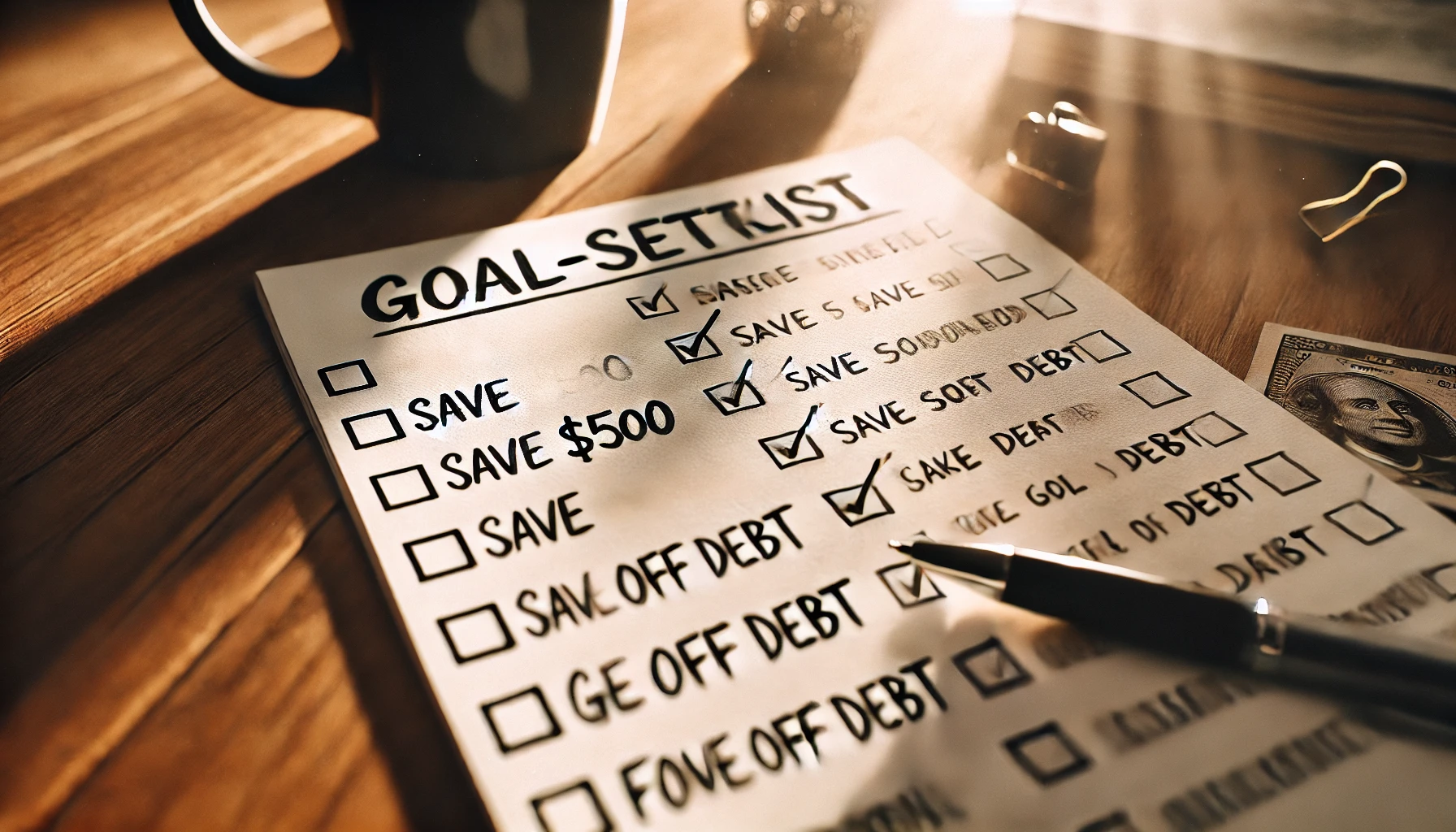
1. Understand Your Income and Expenses 💰
Before setting any budget goals, take a close look at your income and monthly expenses. Break down all sources of income and categorize your spending (e.g., housing, food, utilities, entertainment). This will help you see where your money is going and where you might need to adjust.
2. Set Achievable Targets 🏆
Your budget goals should be specific, measurable, and realistic. For instance, aiming to save $500 each month is a concrete and realistic goal if your income allows it. Avoid setting unrealistic targets like saving 80% of your income if it’s not feasible. Gradual adjustments, like saving an extra $50 per month or reducing dining out by 20%, are more sustainable.
3. Prioritize Essentials First ✅
Make sure your essential expenses, like rent, utilities, and groceries, are covered before focusing on savings or discretionary spending. Once you’ve covered the essentials, allocate a portion for savings and investments. This approach ensures you meet your basic needs while gradually working toward financial stability.
4. Set Short and Long-Term Goals ⏳
Having both short-term and long-term financial goals helps create balance in your budgeting. Short-term goals could include saving for a vacation or building an emergency fund, while long-term goals might involve retirement savings or buying a home. Both types of goals are important, but be sure to keep them balanced to prevent feeling overwhelmed.
5. Track Progress Regularly 📊
A key part of any budgeting goal is tracking your progress. Review your finances monthly to ensure you’re sticking to your budget and making progress toward your goals. Tracking helps you identify where you’re succeeding and where you might need to make adjustments.
Starting with a realistic budgeting goal in 2025 doesn’t have to be overwhelming. By understanding your income, setting achievable targets, prioritizing essentials, and tracking progress, you’ll be on the path to financial success. Take the first step today and make budgeting a habit for a brighter financial future! 💪
💡 2. Track Your Income and Expenses
Tracking your income and expenses is the cornerstone of any successful budgeting plan. Without this basic step, it’s nearly impossible to understand where your money is going or how much you’re truly earning. Here’s why you should track your finances and how to do it effectively:
![]()
Why It’s Crucial 📊
Knowing exactly how much you earn and where your money goes each month gives you full control over your finances. It allows you to identify spending patterns, make necessary adjustments, and start saving more effectively. It also helps you set achievable financial goals and work toward them with confidence.
How to Track Income and Expenses 📝
- Use a Budgeting App: There are plenty of user-friendly apps available, like Mint or YNAB (You Need A Budget), which automatically sync your bank accounts and credit cards. These apps track all your transactions in real-time, making it easy to monitor both your income and expenses.
- Create a Simple Spreadsheet: If you prefer to go old-school, a spreadsheet can work wonders. List your income at the top and categorize your expenses (e.g., rent, groceries, entertainment) underneath. This way, you can see exactly where your money is going each month.
- Keep Receipts: For cash transactions, always hold on to receipts. This helps you track expenses accurately without missing a single dollar.
Tips for Success 💡
- Set a Weekly Review: Dedicate time each week to go through your income and expenses. This will ensure you stay on top of your finances and catch any potential overspending early.
- Stay Consistent: It’s important to track everything. Small purchases like coffee or snacks can add up quickly, so don’t overlook them.
- Automate Savings: Once you have a clear picture of your spending, automate a portion of your income into savings. This ensures you’re putting money aside for future goals without thinking about it.
Benefits of Tracking 💸
- Identify Areas to Cut Back: By regularly tracking your expenses, you’ll be able to spot unnecessary spending habits. For example, do you spend more on dining out than you realize? Tracking can help you see the bigger picture and make informed decisions.
- Improve Financial Health: When you track your finances, you can pay off debts faster, save for future needs, and feel more secure about your financial stability.
💡 3. Create a Zero-Based Budget
A zero-based budget is a powerful way to take control of your finances. Unlike traditional budgeting methods where you allocate set amounts to categories, a zero-based budget ensures that every dollar of your income has a specific purpose. Here’s how it works and why it’s so effective:
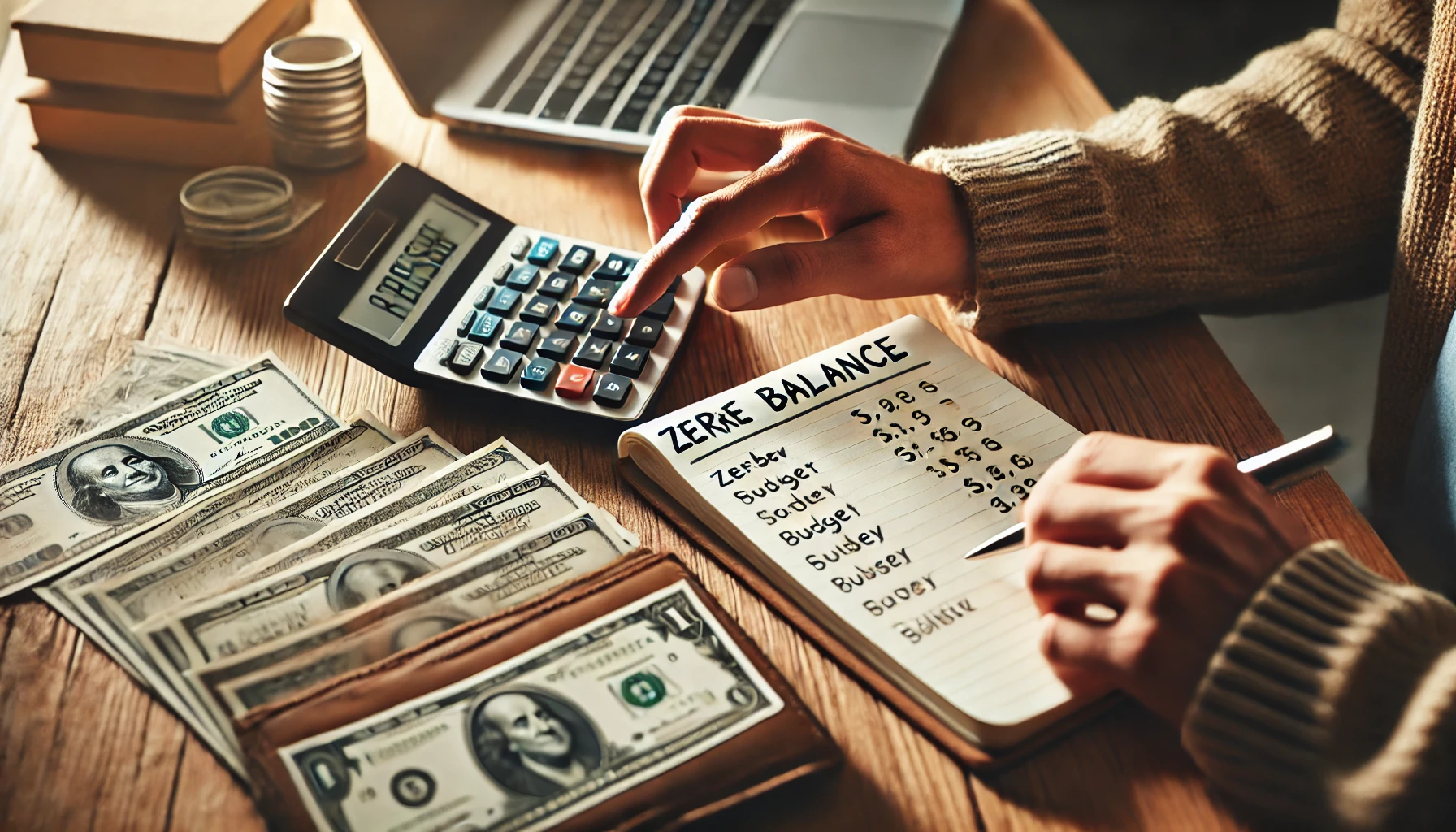
What is Zero-Based Budgeting? 🤔
Zero-based budgeting is simple: you start with your total income for the month, and then you assign every dollar to a specific expense, savings goal, or debt repayment. The goal is to ensure that your income minus your expenses equals zero. This means you are intentionally telling your money where to go, instead of letting it flow aimlessly.
How to Create a Zero-Based Budget 💰
- Calculate Your Income: Start by determining your total income for the month. This includes your salary, side gigs, or any other sources of income.
- List Your Expenses: Write down all your monthly expenses. Start with essential items like rent, utilities, groceries, and transportation. Then, include discretionary spending such as entertainment, dining out, and shopping.
- Assign Every Dollar: Now, go through your list of expenses and allocate an exact amount to each category. Make sure that when you total all the expenses, it equals your monthly income. If you find you have extra money left over, allocate it to savings, investments, or debt repayment.
- Review and Adjust: After your budget is set, track your spending to make sure you’re sticking to it. At the end of the month, if you’ve spent less in certain categories, reassign those funds to other areas like savings or paying down debt.
Why Zero-Based Budgeting Works 🌟
- Increased Awareness: By assigning a purpose to every dollar, you become more aware of where your money is going. This method forces you to actively think about each expense, which helps prevent impulsive purchases.
- Boosts Savings and Debt Repayment: When every dollar is assigned, it’s easier to prioritize your financial goals. Whether you want to save for a vacation or pay off debt, a zero-based budget ensures you are always putting your money toward those goals.
- Flexibility: This budget works for everyone—whether you’re living paycheck to paycheck or have a more flexible income. It’s an adaptable tool that can be tweaked every month to fit your changing needs.
Tips for Success ✅
- Plan for the Unexpected: Include a category for irregular expenses like car repairs or medical bills. This will help you prepare for emergencies without derailing your budget.
- Be Realistic: Don’t overestimate your income or underestimate your expenses. Be honest about what you need and how much you’re able to save.
💡 4. Use the 50/30/20 Rule for Simple Budgeting
The 50/30/20 rule is one of the easiest and most effective methods for budgeting, especially for those who are new to managing their finances. This rule breaks down your income into three simple categories, making it easy to allocate funds without overcomplicating things. Here’s how it works and why it’s so practical:
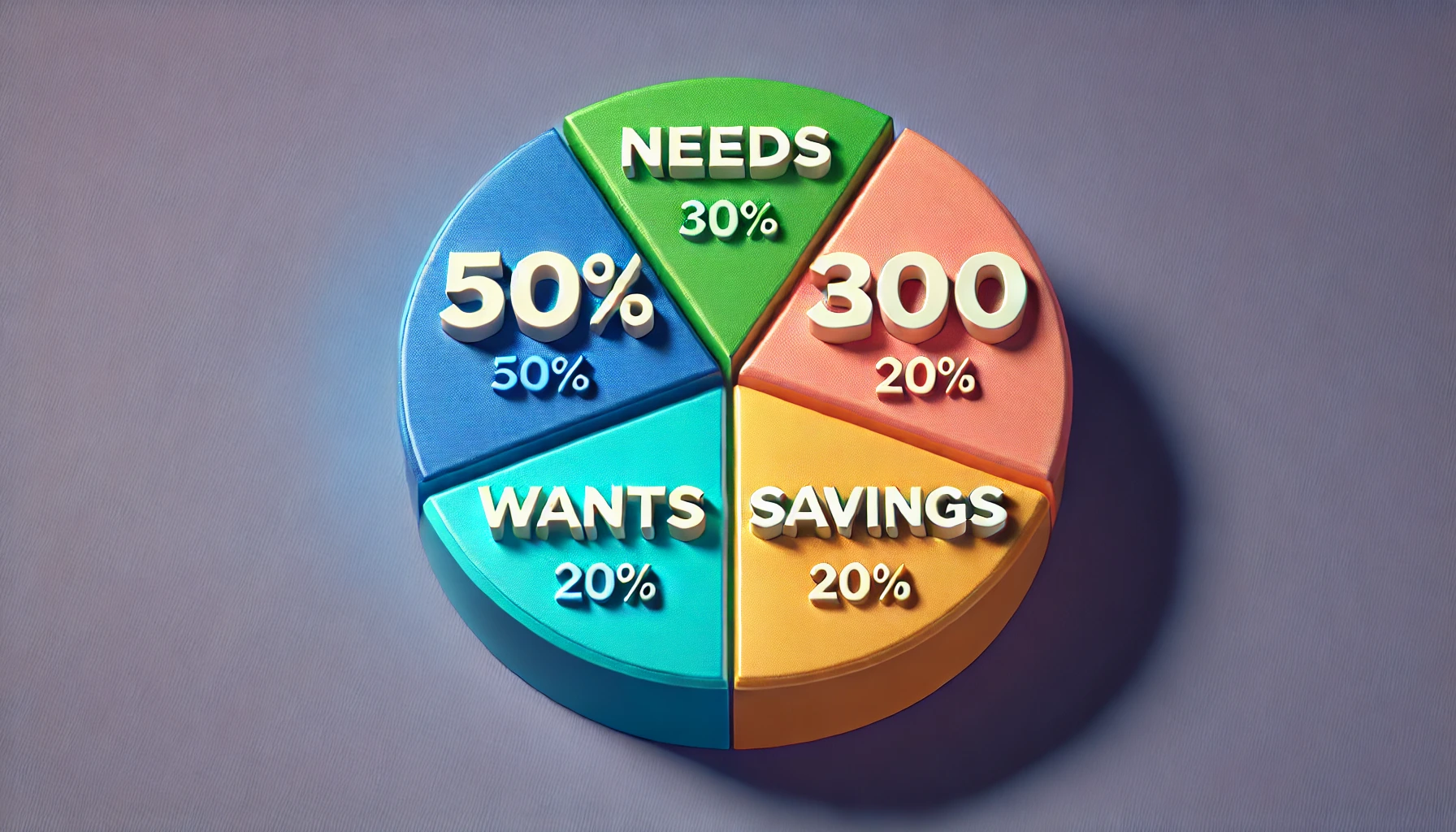
What is the 50/30/20 Rule? 🤔
The 50/30/20 rule divides your after-tax income into three main categories:
- 50% for Needs: These are your essential living expenses that you cannot go without, like rent, utilities, transportation, and groceries.
- 30% for Wants: These include discretionary spending, such as dining out, entertainment, shopping, or hobbies.
- 20% for Savings and Debt Repayment: This portion is dedicated to building your financial future—whether it’s putting money in your savings account, investing, or paying off debts.
How to Apply the 50/30/20 Rule 💸
- Determine Your After-Tax Income: Start by calculating how much money you take home after taxes. This is the amount you will use for the 50/30/20 breakdown.
- Allocate Your Budget:
- 50% for Needs: Take half of your after-tax income and use it for essential expenses. These are non-negotiable costs necessary for your daily life.
- 30% for Wants: This portion is for things you enjoy but don’t need. Use it for entertainment, shopping, or travel.
- 20% for Savings and Debt Repayment: The remaining 20% should go directly into savings, investments, or paying down high-interest debt.
- Track Your Spending: To stick to this budget, track your expenses regularly. Apps or spreadsheets can help you monitor and ensure that you’re allocating the right amount to each category.
Why the 50/30/20 Rule Works 🌟
- Simplicity: It’s straightforward and easy to follow. You don’t need to track every small purchase or category—just focus on the big picture and the three main spending areas.
- Flexibility: If you find that you’re spending too much on wants, or need to save more, it’s easy to adjust the percentage breakdown to fit your needs.
- Balances Priorities: The rule ensures that you’re taking care of your needs, treating yourself occasionally, and still prioritizing your financial future.
Tips for Success ✅
- Adjust Percentages: If your needs take up more than 50%, try to cut back on wants. On the flip side, if your wants are eating up more than 30%, find areas to reduce and redirect that money toward savings.
- Emergency Fund: Use the savings portion to build an emergency fund. This will provide a cushion for unexpected expenses, so you’re not derailed by financial surprises.
💡 5. Build an Emergency Fund (Start Small)
An emergency fund is one of the most important financial tools you can have. It provides a safety net for unexpected situations like medical bills, car repairs, or job loss. While it may seem daunting to start saving for emergencies, you can begin small and build up gradually. Here’s how to get started:
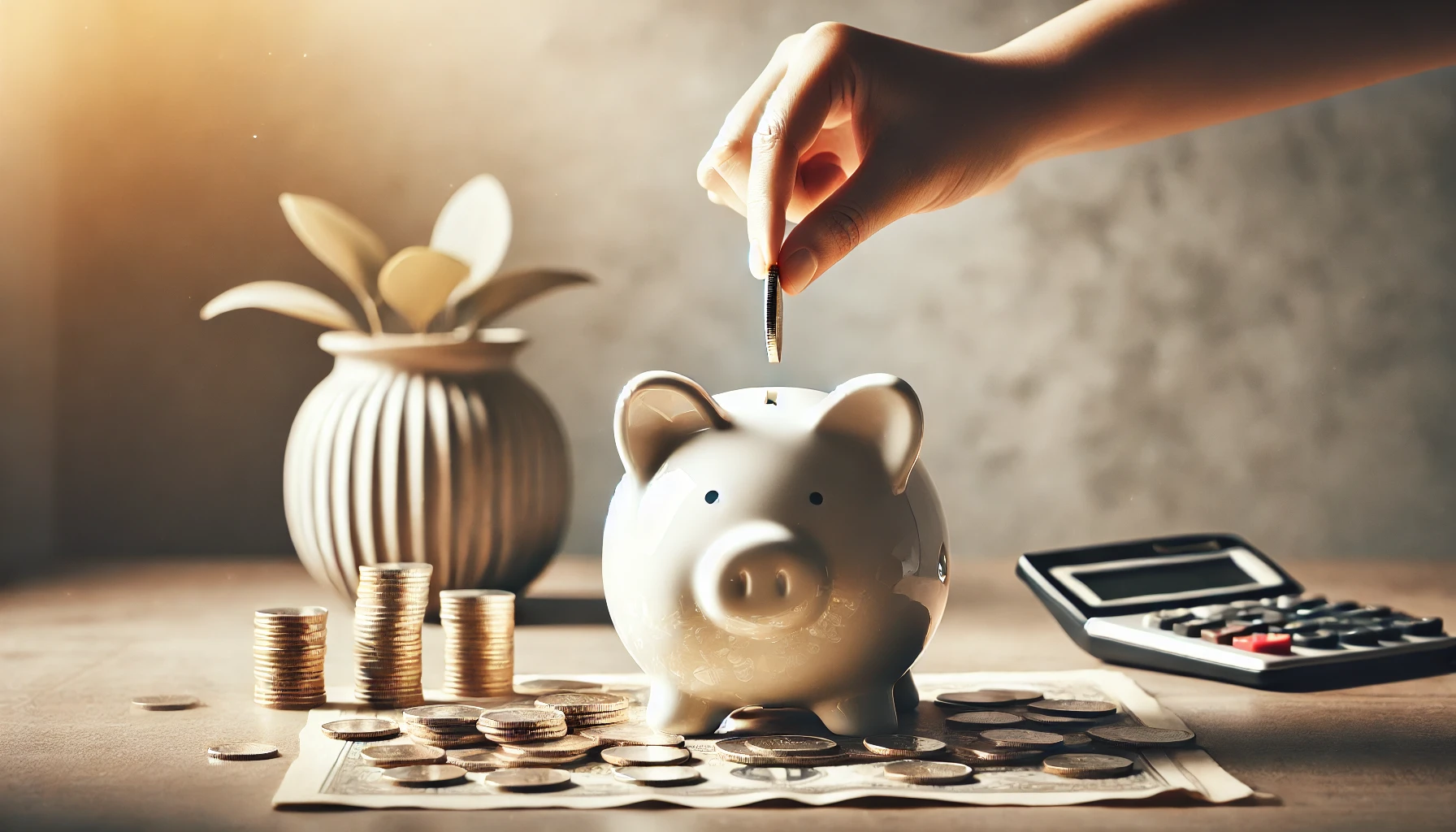
Why You Need an Emergency Fund 🚨
Life is unpredictable. Emergencies can arise at any time, and having a financial cushion helps you avoid going into debt when they do. By setting aside money for the unexpected, you’ll reduce stress and stay on top of your finances, even when challenges arise.
How to Start Building Your Emergency Fund 💰
- Set a Small, Achievable Goal: Start with a modest target, like $500 or $1,000. This will help you build momentum without feeling overwhelmed.
- Automate Savings: Set up an automatic transfer to your emergency fund account. Even saving $25 to $50 per paycheck can quickly add up over time.
- Cut Back on Non-Essential Spending: Look for areas in your budget where you can reduce spending, like dining out or entertainment. Redirect these savings to your emergency fund.
- Use Windfalls Wisely: If you receive a tax refund, bonus, or gift, consider putting a portion of it into your emergency fund. This can give your savings a significant boost without affecting your regular budget.
Why Starting Small Works 🌱
- Realistic: Setting a small goal makes the process feel less intimidating. You don’t need to have thousands saved right away—just take it one step at a time.
- Motivating: Reaching a smaller goal builds confidence and motivates you to continue saving. As your emergency fund grows, you’ll feel more secure in your financial future.
Tips for Success ✅
- Gradually Increase Contributions: Once you reach your initial goal, continue adding to your emergency fund until it covers three to six months of living expenses. This larger fund will give you peace of mind during difficult times.
- Keep it Separate: Open a separate account specifically for your emergency fund. This will prevent you from spending the money on non-emergencies.
💡 6. Cut Unnecessary Subscriptions and Expenses
One of the quickest ways to improve your budget is by identifying and cutting unnecessary subscriptions and expenses. We often overlook small, recurring costs, but these can add up over time and drain your finances. Here’s how to spot and eliminate them:
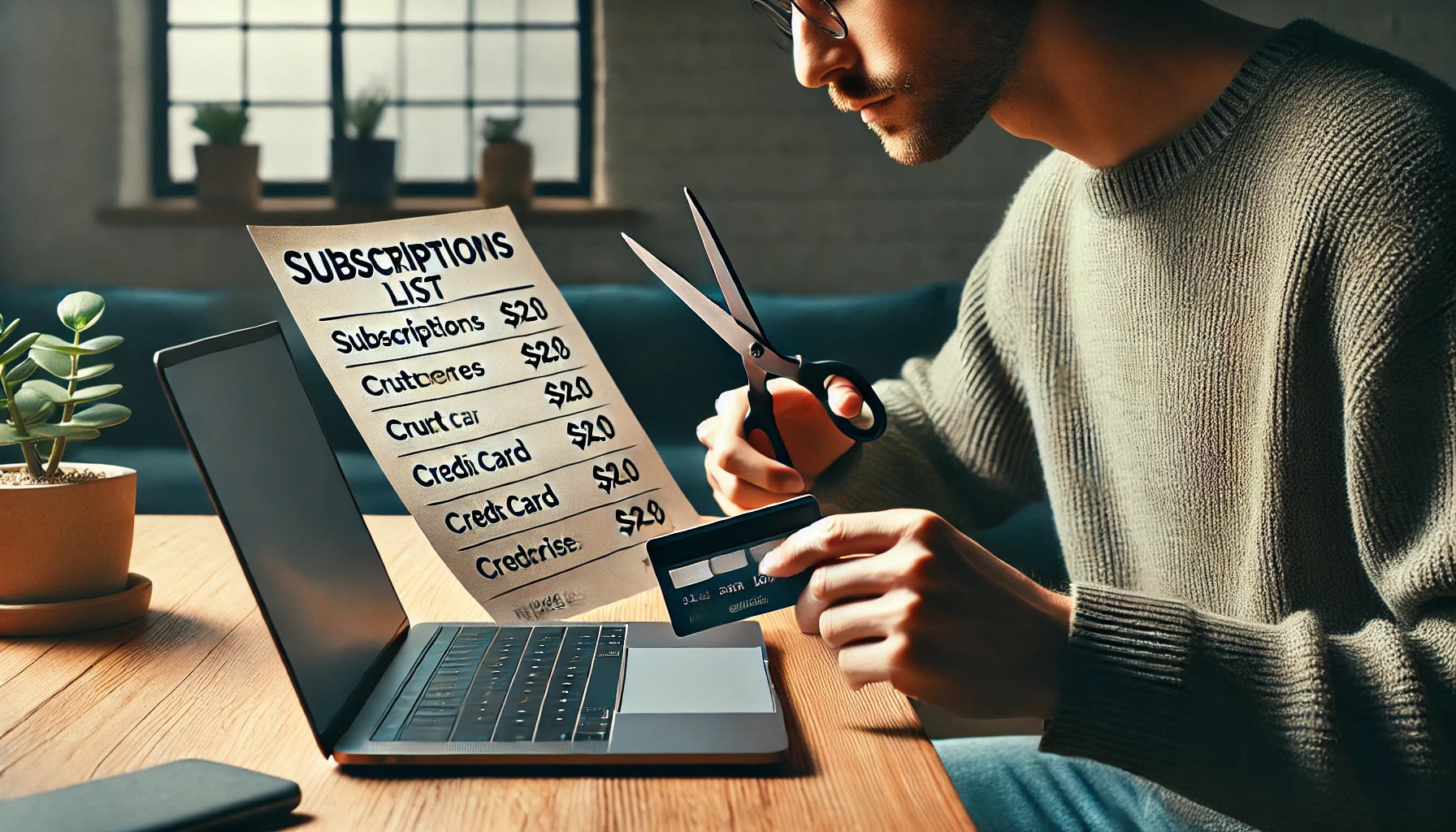
Why You Should Cut Unnecessary Subscriptions 📉
Many of us have subscriptions we no longer use, like streaming services, gym memberships, or magazine subscriptions. These expenses can seem small on paper, but when added together, they can have a significant impact on your finances. Cutting out the ones you don’t need or use regularly can free up cash for more important priorities.
How to Identify Unnecessary Expenses 💡
- Review Your Subscriptions: Go through your bank and credit card statements to identify all the subscriptions you’re paying for. This could include streaming services, apps, or even subscriptions you signed up for a free trial and forgot about.
- Ask Yourself If You Really Use It: For each subscription, ask if you’re actually using it. Do you really need that second streaming service? Are you going to the gym, or is it just sitting there as a monthly expense?
- Consider the Value: Sometimes, we keep subscriptions because they’re convenient or we think we’ll use them more. However, if you’re not getting enough value out of the service, it might be time to cancel it.
How to Cut Back on Other Expenses ✂️
- Limit Dining Out: Eating out can be expensive. Try cooking at home more often and limiting takeout. This will save you money and is often healthier, too!
- Review Your Insurance: Sometimes, you can find cheaper options for insurance (e.g., car, home, health). Shop around and compare rates to see if you can save without sacrificing coverage.
- Cancel Memberships You Don’t Use: If you’re not using that monthly subscription service, cancel it. You can always resubscribe later if you need it.
Why Cutting These Expenses Helps 💪
- Free Up Cash: By eliminating wasteful spending, you can reallocate those funds to important areas like savings, debt repayment, or investments.
- Improve Financial Control: When you cut unnecessary expenses, you regain control over your budget. It allows you to prioritize what really matters to you.
- Reduce Financial Stress: The less you spend on subscriptions you don’t use, the less you have to worry about keeping up with payments and managing debt.
Tips for Success ✅
- Use a Budgeting App: Apps like Mint or YNAB can help you track subscriptions and show where you’re spending unnecessarily.
- Set a Limit for Subscriptions: Create a budget category specifically for subscriptions and stick to it. Once you hit the limit, don’t add anything else without cutting something else first.
💡 7. Automate Savings and Payments
One of the easiest ways to stay on top of your finances is by automating your savings and payments. This simple step can help you stay disciplined, avoid missed payments, and ensure you’re consistently building your financial future. Here’s how to get started:
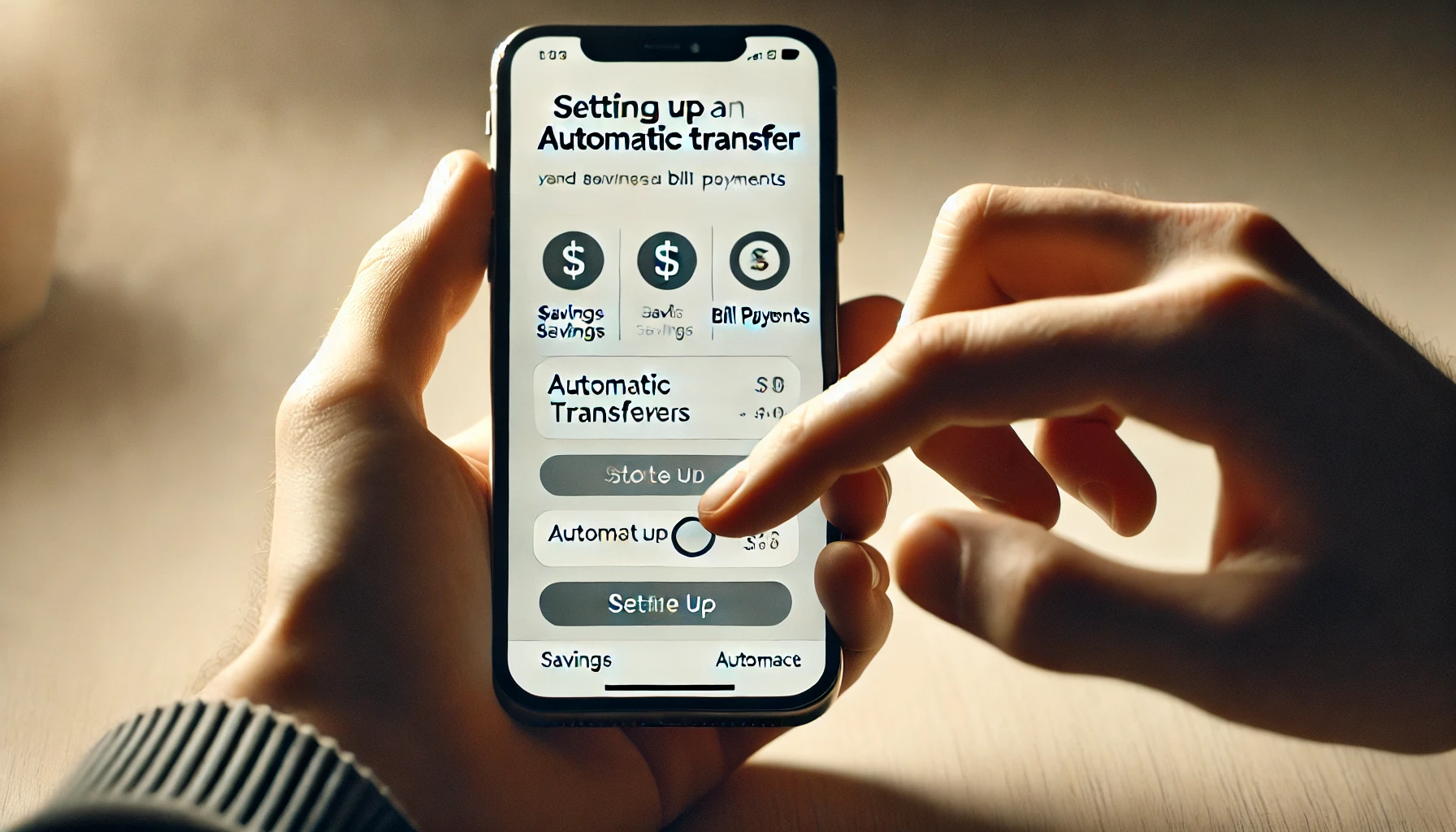
Why Automation Works 🧑💻
Automating your savings and payments removes the need for constant decision-making. By setting everything on autopilot, you eliminate the chance of forgetting to pay bills or skipping a month of savings. It also helps you save time and reduces financial stress.
How to Automate Your Savings 💰
- Set Up Automatic Transfers: Schedule a fixed amount to be transferred from your checking account to your savings account each month. Treat this like any other bill and make sure it happens automatically.
- Automate Investment Contributions: If you’re investing in retirement accounts, such as a 401(k) or IRA, set up automatic contributions. This ensures that you’re consistently investing without having to think about it.
- Start Small: If you’re just getting started with automation, begin with small amounts. Over time, you can gradually increase these contributions as your income grows.
How to Automate Your Payments 🧾
- Pay Bills Automatically: Set up automatic payments for your recurring bills, such as rent, utilities, and credit cards. This ensures that you won’t miss any due dates and avoids late fees.
- Use Bill Pay Services: Many banks and credit unions offer bill pay services that automatically send payments to your vendors. These services can be set up for utilities, subscriptions, and even insurance premiums.
- Track and Monitor: Even though automation simplifies things, it’s important to regularly check your bank accounts to ensure everything is running smoothly.
Benefits of Automating 💡
- Consistency: You’ll always pay your bills on time and save consistently without having to remember deadlines.
- Financial Control: Automation keeps you on track with your savings goals and ensures that you’re prioritizing your financial future.
- Less Stress: With everything on autopilot, you can reduce the mental load of keeping track of payments and savings, giving you more peace of mind.
Tips for Success ✅
- Review Your Automation Regularly: Set a reminder to check your automated transfers and payments every few months. This way, you can adjust amounts if necessary or review if all subscriptions are still relevant.
- Use Separate Accounts: Consider setting up a dedicated savings account or a high-interest account for your savings. This reduces the temptation to dip into savings for non-emergencies.
💡 8. Focus on Paying Off High-Interest Debt First
When it comes to managing your finances, paying off high-interest debt should be a top priority. High-interest debt, like credit card balances or payday loans, can quickly spiral out of control and become a major barrier to achieving your financial goals. Here’s why and how to tackle it head-on:
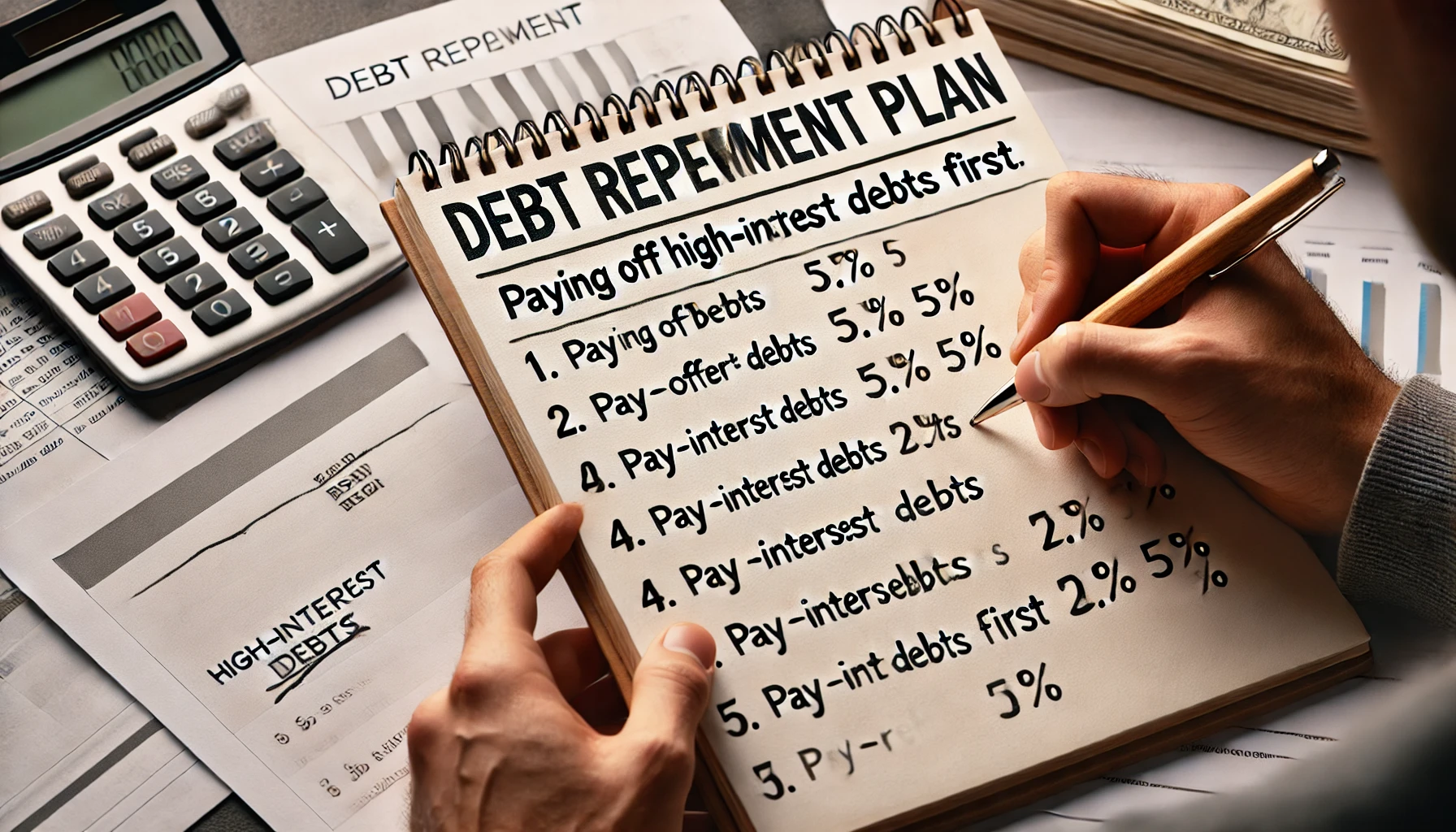
Why Focus on High-Interest Debt? 💳
High-interest debt is costly. Each month, a large portion of your payment goes toward interest rather than the principal balance, which means it takes longer to pay off and you end up paying more in the long run. By prioritizing these debts, you can stop the cycle of debt accumulation and free up more money for savings and investments.
How to Pay Off High-Interest Debt First 💰
- List Your Debts: Start by listing all your debts, including the interest rates. This will help you identify which ones are costing you the most.
- Use the Debt Avalanche Method: With this method, you pay the minimum on all debts except the one with the highest interest rate. Allocate any extra money toward paying down that high-interest debt as quickly as possible. Once it’s paid off, move on to the next highest interest rate.
- Cut Unnecessary Spending: Free up extra cash by reducing discretionary spending. The money you save can go directly toward paying off your high-interest debt.
- Consider Refinancing or Consolidation: If you have multiple high-interest debts, consolidating them into a single loan with a lower interest rate could help reduce your overall interest payments.
Benefits of Paying Off High-Interest Debt 🏦
- Save Money: The faster you pay off high-interest debt, the less you’ll pay in interest over time, allowing you to save more money in the long run.
- Improve Your Credit Score: Reducing high-interest debt can positively impact your credit utilization ratio, which may improve your credit score over time.
- Financial Freedom: Once high-interest debts are paid off, you’ll have more financial flexibility, giving you the freedom to invest or save for future goals.
Tips For Success ✅
- Stick to a Budget: Create a budget that includes extra payments toward your high-interest debt. Track your progress and celebrate small wins along the way.
- Avoid Adding More Debt: While paying off high-interest debt, try to avoid accumulating more debt. Use cash or debit cards for purchases, and avoid taking on new high-interest debt.
💡 9. Use Cash Envelopes for Discretionary Spending
One of the most effective ways to control discretionary spending is by using the cash envelope system. This simple method helps you stay within budget and prevents overspending by physically limiting how much you can spend in certain categories. Here’s how it works and why it’s so powerful:

Why Use Cash Envelopes? 💵
When you use cash, you can see exactly how much money you have left, making it harder to overspend. Unlike digital payments, where it’s easy to lose track of spending, cash provides a tangible reminder of your budget limits. By using cash envelopes for discretionary expenses, you give yourself a clear boundary that helps prevent impulse buys and encourages smarter spending.
How to Set Up the Cash Envelope System 📂
- Identify Discretionary Categories: Start by identifying the categories where you tend to overspend, such as dining out, entertainment, shopping, or hobbies. These are the categories that you’ll focus on with cash envelopes.
- Allocate a Set Amount: Decide how much money you can afford to spend in each category for the month. For example, you might allocate $200 for dining out, $50 for entertainment, and $100 for shopping.
- Withdraw the Cash: At the beginning of the month (or week), withdraw the cash for each envelope category. Label each envelope with the category and the allocated amount.
- Pay in Cash: When you want to make a purchase in one of these categories, use the cash from the corresponding envelope. Once the money is gone, you stop spending in that category for the rest of the month.
Why It Works So Well 🏦
- Prevents Impulse Spending: When you only have a limited amount of cash for each category, you’re more likely to think twice before making a purchase.
- Helps You Stay Accountable: The visual reminder of a dwindling cash supply helps keep your spending in check and reinforces your commitment to your budget.
- Simple and Effective: Unlike complex budgeting apps or systems, the cash envelope method is straightforward and easy to follow. It’s a hands-on approach that works, no tech needed!
Tips for Success ✅
- Stick to the Budget: If you run out of cash in a particular envelope, resist the urge to dip into other envelopes or use a credit card. Hold yourself accountable to the system.
- Review and Adjust: At the end of the month, review how you did. If you consistently underspend in one category, consider reallocating that money to another envelope or boosting your savings.
💡 10. Review and Adjust Your Budget Regularly
Creating a budget is just the first step. To truly take control of your finances, it’s essential to review and adjust your budget regularly. Life changes, expenses shift, and your financial goals may evolve over time, so your budget needs to be flexible. Here’s why and how to keep your budget updated:
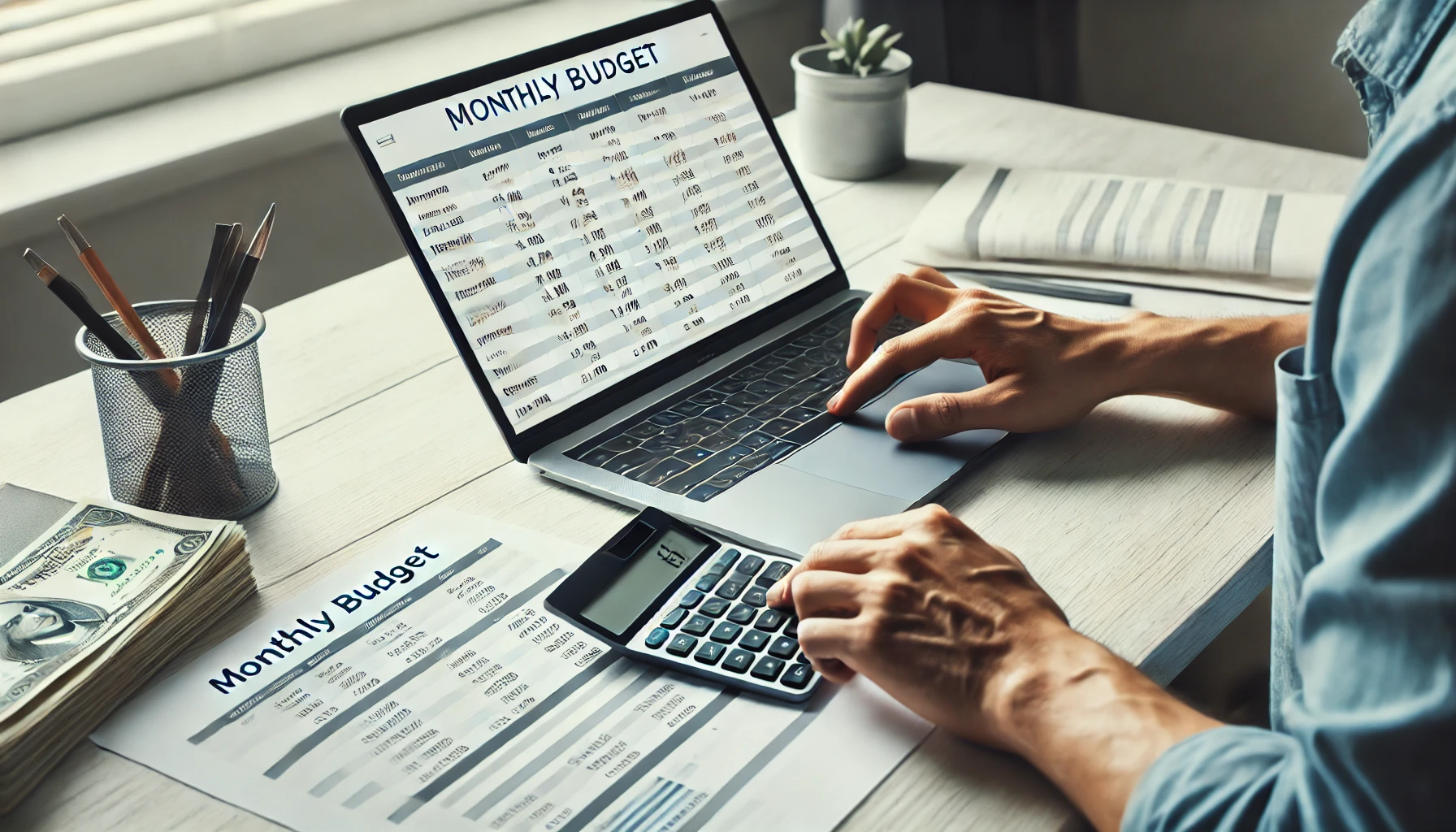
Why You Need to Review Your Budget 🧐
Your initial budget may work great when you first create it, but as time goes on, things can change. Unexpected expenses, income increases, or new financial goals may require adjustments. Regularly reviewing your budget helps you stay on track, spot areas for improvement, and ensure you’re meeting your financial goals.
How to Review and Adjust Your Budget 🔍
- Set a Regular Check-In Schedule: Aim to review your budget at least once a month. This will give you a clear picture of your finances and allow you to make adjustments before any problems arise.
- Compare Actual Spending to Your Budget: Look at your actual expenses versus what you planned. Are you overspending in certain categories? Are there areas where you can cut back? This analysis helps you identify trends and areas that need attention.
- Adjust for Life Changes: If your income has changed (e.g., you got a raise or a new job), or if you have new expenses (e.g., a new car or a baby on the way), adjust your budget to reflect these changes. Similarly, if your financial goals shift, update your allocations for savings or debt repayment.
- Reallocate Funds: If you’re consistently underspending in certain categories, consider reallocating that money to areas where you need more support, like savings, investments, or paying off debt.
Benefits of Regularly Reviewing Your Budget 📈
- Keeps You on Track: A regular review ensures that you are meeting your financial goals and that your spending aligns with your priorities.
- Prevents Financial Surprises: By checking in regularly, you can spot potential issues early, like overspending or missed payments, and address them before they get out of hand.
- Improves Financial Flexibility: Life can be unpredictable, and reviewing your budget allows you to adapt to changes without feeling overwhelmed.
Tips for Success ✅
- Use Budgeting Tools: Apps like Mint or YNAB can make the review process easier by automatically tracking your spending and comparing it to your budget.
- Stay Honest with Yourself: Be honest when reviewing your budget. If you’ve been overspending, acknowledge it, and make a plan to correct it. This honesty is key to improving your financial habits.
Taking control of your finances in 2025 starts with adopting the right budgeting habits. By implementing strategies like tracking your income and expenses, automating savings, cutting unnecessary subscriptions, and prioritizing high-interest debt, you can create a financial plan that works for you. Remember, budgeting isn’t about restriction—it’s about gaining control, reducing stress, and achieving your financial goals with confidence.
Whether you choose a zero-based budget, the 50/30/20 rule, or another method that fits your lifestyle, the key is to stay consistent, review your progress regularly, and make adjustments as life evolves. With small, manageable changes, you’ll be well on your way to securing a stronger financial future and gaining the freedom to live life on your terms.
Start today, stay disciplined, and watch your financial situation improve! 😊
Frequently Asked Questions (FAQs)
1. How can I start budgeting if I have no experience with it?
Start by tracking your income and expenses to see where your money goes. You can use simple tools like budgeting apps (e.g., Mint, YNAB) or a spreadsheet. Then, allocate money to essentials, savings, and discretionary spending. Start small and build consistency.
2. What is the 50/30/20 rule, and how can it help my finances?
The 50/30/20 rule divides your income into three categories: 50% for needs, 30% for wants, and 20% for savings and debt repayment. This method helps you manage your finances easily and ensures you’re covering the essentials while saving for the future.
3. Why is it important to have an emergency fund, and how do I start one?
An emergency fund provides financial security in case of unexpected expenses like medical bills or job loss. Start small by saving a few hundred dollars, then gradually build it up to cover 3-6 months of expenses. Set up automatic transfers to make saving easier.
4. How can I pay off high-interest debt faster?
Focus on paying off the debt with the highest interest rate first, using the debt avalanche method. By doing this, you reduce the amount of interest you pay in the long term. Also, consider consolidating debt or refinancing for a lower interest rate.
5. How do I cut unnecessary subscriptions and save money?
Review all your subscriptions and cancel those you don’t use regularly, like unused streaming services or memberships. Small recurring costs can add up, so cutting back can free up money for more important financial goals.
6. What’s the best way to track my spending?
Use budgeting apps, spreadsheets, or even a simple pen-and-paper method to track where your money is going. Regularly review your spending, especially on non-essential items, to identify areas where you can cut back.
7. How can I stay motivated to stick to my budget?
Set clear financial goals and reward yourself when you reach milestones. Track your progress to see how your budgeting is helping you achieve your goals, whether it’s building savings or paying down debt. Consistency is key to staying motivated.
8. Can I automate my savings and bill payments, and how do I do it?
Yes, you can automate savings by setting up automatic transfers to a savings or investment account. Similarly, set up automatic bill payments for recurring expenses like utilities and credit cards to avoid late fees and stay on track. Use your bank’s features or third-party apps for easy setup.
